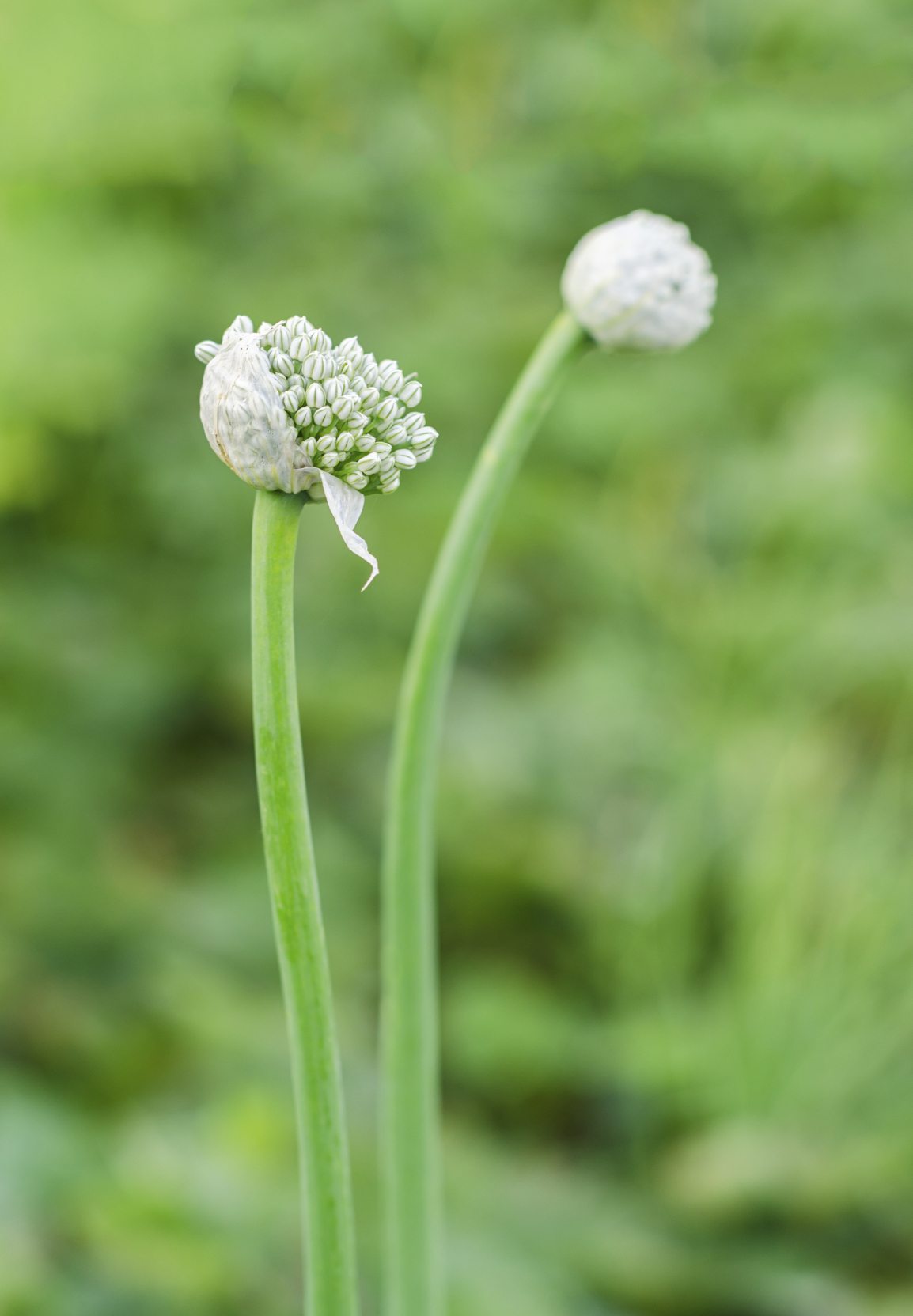Ornamental Garlic Plants – Why My Garlic Is Flowering


Garlic has a host of health benefits and livens up any recipe. It is a key ingredient in both regional and international cuisine. Do garlic plants bloom? Garlic bulbs are no different than other bulbs in that they sprout and produce flowers. Ornamental garlic plants are grown to produce these blooms, which are called scapes. These are delicious when sautéed and provide an interesting, starry pouf of tiny florets to adorn the landscape.
Do Garlic Plants Bloom?
Garlic plant flowering takes place near the latter part of the plant’s life cycle. Planting garlic for its flowers is as simple as allowing the plants to develop longer than you normally would for bulb harvest. I'm always thrilled to see my garlic is flowering, as it increases the interest in the herb garden and I can still harvest the garlic bulbs, although the inflorescence will redirect energy from the bulb. For larger bulbs, remove the scapes and eat them before the buds burst open. Bulbs are complex storage organs for plants. They house not only the embryo, which causes the plant to form shoots, but also contain the energy needed to start the growth and flowering process. Flowering is part of a plant’s life cycle wherein it seeks to produce seed and perpetuate itself. Although we most commonly grow garlic just for the intoxicating bulbs, allowing garlic plant flowering lends a unique and magical touch to the landscape. Intentionally planting garlic flowers is becoming popular due to the tasty scapes. These are simply the buds for the flower and have a long history as an edible in their own right.
Producing Ornamental Garlic Plants
If you want to try growing some of these aromatic bursts of white florets for yourself, start with planting garlic. If you want big, robust garlic bulbs, it's inadvisable to allow them to flower, but letting the scapes themselves appear does not seem to slow bulb growth. Plant numerous seed garlic in fall for hard neck bulbs or in spring for soft neck. Let a few of these develop scapes and produce starry balls of flowers just for the enjoyment. The rest of the plants should have their scapes removed and be used in salads, soups, sautés, sauces, and any other dish that can be improved with their mild garlic flavor.
What to Do if My Garlic Plant is Flowering
If you have planted garlic for its bulbs and neglect to remove the scapes, the plant is directing its energy to producing flowers rather than bigger bulbs. You can still harvest the bulbs but they will be small and low in flavor. In some regions, garlic can stay in the ground and produce a second year harvest. To reap the benefits the following year, remove the flowers and mulch around the garlic in fall. Let the green shoots die back. In spring, they should re-sprout, and the number of garlic bulbs will increase. Pull away the mulch to allow shoots to emerge from the soil. This way you have one season where planting garlic flower was the goal, but a second season of bulb harvest is still possible. These may still be smaller than they would be without flowering but the flavor will be intense and delicious.
Gardening tips, videos, info and more delivered right to your inbox!
Sign up for the Gardening Know How newsletter today and receive a free copy of our e-book "How to Grow Delicious Tomatoes".

Bonnie Grant is a professional landscaper with a Certification in Urban Gardening. She has been gardening and writing for 15 years. A former professional chef, she has a passion for edible landscaping.
-
 Zinnias On Repeat: 10 Glorious Cut-And-Come-Again Varieties For Endless Summer Bouquets
Zinnias On Repeat: 10 Glorious Cut-And-Come-Again Varieties For Endless Summer BouquetsThese zinnia varieties keep giving all summer, making them the perfect choice for dedicated cutting gardens – or just the occasional homegrown bouquet.
By Ellen Wells
-
 Create A Romantic Garden Straight Out Of Bridgerton: Regency Era Romance In Your Garden
Create A Romantic Garden Straight Out Of Bridgerton: Regency Era Romance In Your GardenTry some romantic garden ideas straight out of Bridgerton. Flowers and gardens in the Regency era were lush and charming and you can get the same look!
By Bonnie L. Grant